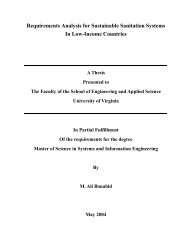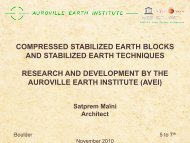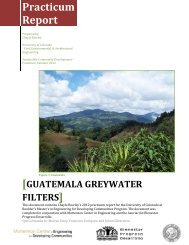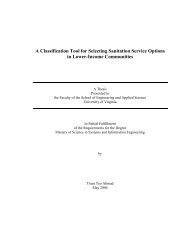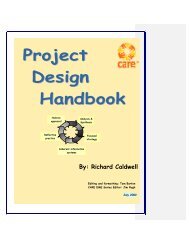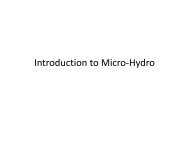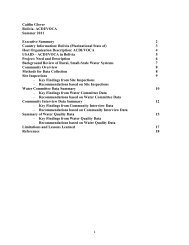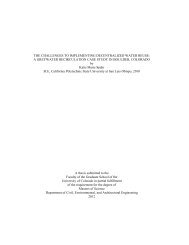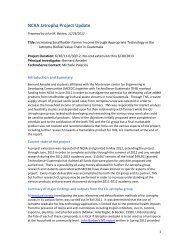SCEBs - University of Colorado Boulder
SCEBs - University of Colorado Boulder
SCEBs - University of Colorado Boulder
You also want an ePaper? Increase the reach of your titles
YUMPU automatically turns print PDFs into web optimized ePapers that Google loves.
sedimentation (jar) test, ball drop test, cohesion (ribbon) test, etc. The results from these<br />
tests need to be interpreted carefully and are <strong>of</strong>ten difficult to quantify. The most<br />
efficient way to determine the suitability <strong>of</strong> a soil for blocks is to make and evaluate<br />
several sample blocks from an available source (McHenry, 1984). It is for this reason<br />
that the author has chosen to only mention these soil evaluation methods and not devote<br />
significant research time to verifying their legitimacy.<br />
In particular, the “jar” test is <strong>of</strong>ten suggested to provide the proportions <strong>of</strong> sand,<br />
silt, and clay. While the test may be accurate for certain soils, it is not always correct to<br />
interpret the results directly. Statistical analysis performed at Texas A&M has shown<br />
wide variability in “jar” test results suggesting that many tests may be needed to be<br />
performed before a high level <strong>of</strong> confidence can be achieved (Graham and Burt, 2001).<br />
The interpretation <strong>of</strong> the jar “test” assumes that the strata layer heights correspond to the<br />
proportions <strong>of</strong> the soil‟s constituents. This assumption is not exact, as one can only<br />
distinguish between successive strata at sudden changes <strong>of</strong> grain-size distribution, which<br />
may not coincide with the actual defined limits between sand, silt and clay (Minke,<br />
2006).<br />
A proposed standard <strong>of</strong> care must involve a rigorous understanding <strong>of</strong> the<br />
mechanical properties <strong>of</strong> the construction materials intended for structural design (Craig,<br />
2000). Material properties such as strength, stiffness, and ductility assist with design<br />
decisions determining load capacity, settlement, and deformation. An earthen block‟s<br />
primary function in a building application is to provide structural support for the walls<br />
themselves, as well as any expected dead and live loads. The block‟s strength in<br />
compression is <strong>of</strong> particular interest. Mechanically compacted cement-stabilized earthen<br />
11



